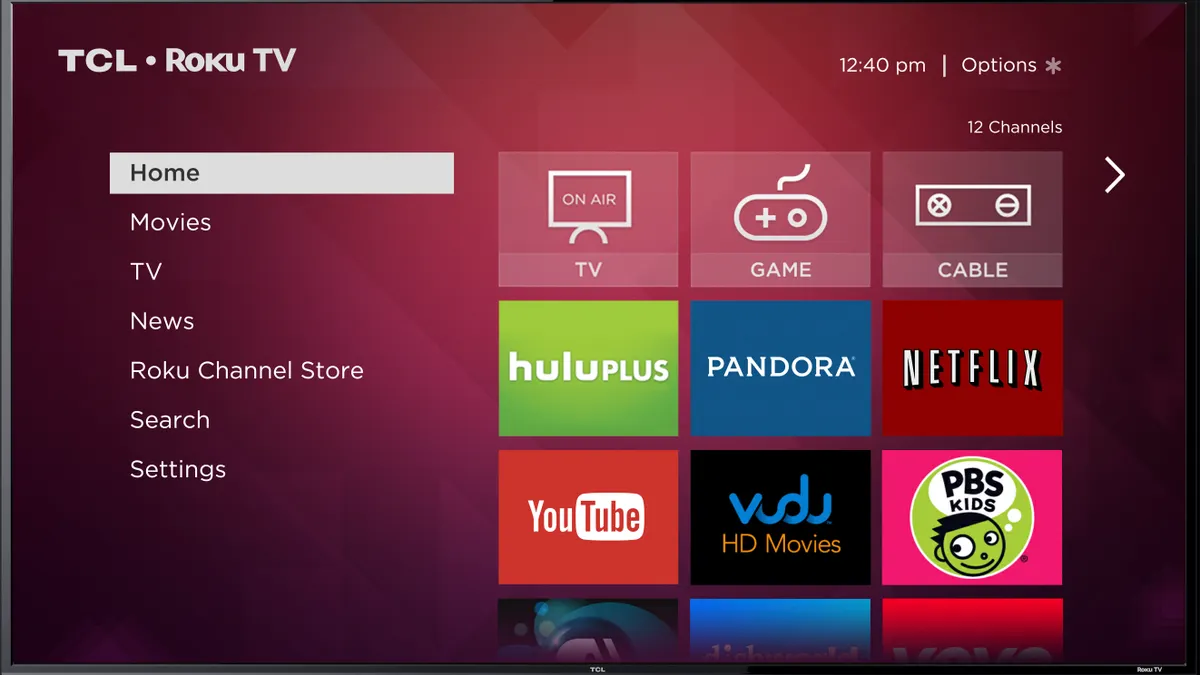
This image provided by Roku Inc., shows a screen frame grab of Roku's service. Internet streaming platform company Roku, Inc., is launching a line of TVs that plays back video from services like Netflix without requiring an extra set-top box. While similar to smart TVs on the market already, Roku's platform with some 1,200 apps is far more comprehensive for those seeking out niche content. Roku plans to showcase them on the sidelines of the annual gadget show in Las Vegas, International CES, starting Monday, Jan. 6, 2014. (AP Photo/Roku Inc.) (AP2014)
Does Roku want to get out of the set-top-box business?
That’s a question I was asked when the company announced at CES 2014 that it was licensing its streaming platform to several TV brands, enabling those companies to bake Roku into their sets. Customers could then get much of what we like about Roku—the intuitive, graphic interface, well-organized content menus, and access to lots of content via the Roku Channel Store—without the need for separate Roku hardware.
Hisense and TCL are the first TV brands to come on board, with the first Roku TV sets arriving in the fall.
Roku will continue to make its well-regarded standalone streaming media players, though more TVs now come with smart-TV platforms that provide access to streaming movies and TV shows, Internet music stations, and other Web-based content.
For all the show news, trends, and analysis, visit our insider's guide to CES 2014.
Roku says Roku TVs will use a simplified remote control that contains just 20 buttons, about half the number of most regular TVs; you'll also be able to control the TVs with a free Android or iOs app.
The Roku TV platform also supports DIAL, the technology used by Chromecast that lets you “cast” content from a PC or Mac to your TV using a Chrome browser.
Roku’s licensing move is a logical extension of the “Roku ready” program in place with a number of secondary TV brands. Those TVs work with the Roku Streaming Stick, a small, USB-sized media player (shown).
—James K. Willcox
Copyright © 2005-2014 Consumers Union of U.S., Inc. No reproduction, in whole or in part, without written permission. Consumer Reports has no relationship with any advertisers on this site.




















